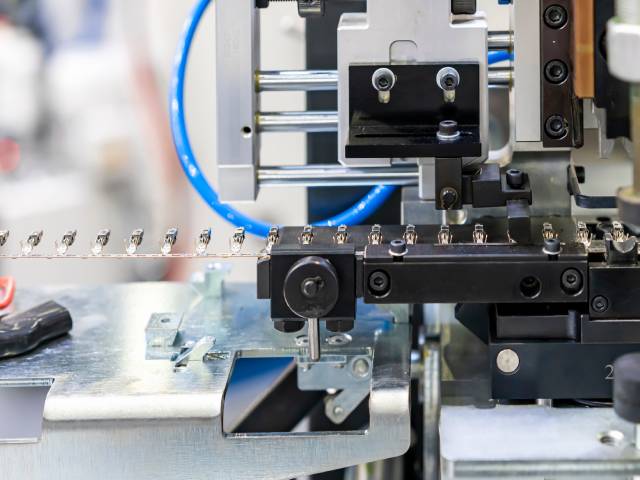
Precision and reliability are paramount in electrical engineering and manufacturing. Crimping machines play a critical role in ensuring secure connections and optimal performance.
These machines rely heavily on die sets to perform efficiently, and selecting a suitable die set is essential for achieving high-quality crimps. Below, we’ll explain how to choose the right die set for your crimping machine by explaining the key factors to consider.
Die sets consist of matched pairs of dies that compress the wire and terminal together, ensuring a secure and consistent connection. The choice of die set directly influences the quality and durability of the crimped connection.
Unfortunately, choosing incorrect die sets is one of the most common mistakes people make when using their crimping machines. By understanding the nuances of die sets, engineers can make informed decisions that enhance operational efficiency and product integrity.
There are many factors to consider when choosing the right die set for your crimping machine, from the wire type you’re crimping to the crimp profile.
Different types of wire materials require specific die sets to achieve optimal results. For instance, copper and aluminum wires have varying hardness and flexibility, demanding dies to handle their unique properties. It’s crucial to select a die set that matches the wire type to avoid issues such as improper crimping or damaging the wire.
The insulation type and thickness of the wire are significant factors in die selection. Insulated wires need dies with features like insulation crimpers that secure the insulation without compromising the conductor. Ensure that the die set accommodates the insulation type to maintain the integrity and performance of the crimped connection.
Adhering to industry standards from organizations such as the UL (Underwriters Laboratories) and IEC (International Electrotechnical Commission) ensures that the crimped connections meet safety and performance criteria. These standards often specify the types of dies compatible with certain applications. Review the relevant standards for your industry to choose die sets that comply with these requirements.
Terminals come in various shapes and sizes. Examples include ring, spade, and butt connectors. Each terminal type may require a specific die set for proper crimping. Matching the die set to the terminal type ensures a secure fit and reliable electrical connection.
The crimp profile, which refers to the shape and cross-sectional area of the crimped connection, affects the joint’s mechanical and electrical properties. Different applications may demand specific crimp profiles to achieve desired outcomes. Understanding the required crimp profile helps with selecting die sets that produce consistent and high-quality crimps.
Selecting the right die set is a critical decision that impacts the quality, reliability, and efficiency of your crimped connections. By considering factors such as wire type, insulation, industry standards, terminal type, and crimp profile, you can make informed choices that enhance your operations.
24World Media does not take any responsibility of the information you see on this page. The content this page contains is from independent third-party content provider. If you have any concerns regarding the content, please free to write us here: contact@24worldmedia.com